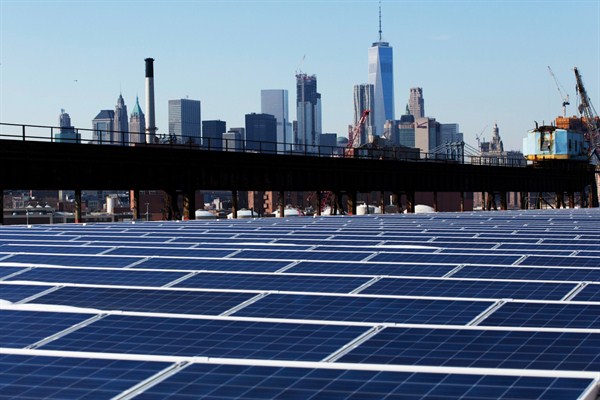There is a future in which wind turbines, twice as tall as the Statue of Liberty, produce electricity across the United States. Because of their height, these turbines would generate power from stronger, more constant gusts, making wind power a viable option in all 50 states, instead of primarily those in the nation’s plains where there are steady, lower winds. In this same future, inexpensive solar cells would coat windows, turning office buildings and homes into self-reliant electricity “prosumers.”
Best of all, these technologies would be American innovations. The United States could breathe a sigh of relief after China briefly became the leading producer of the world’s clean energy technologies. Instead of risking continued Chinese dominance, the United States would have chosen to invest in public research and development to will this better future into existence—to design advanced technologies to help allies combat climate change and advance America’s broader diplomatic agenda.
The Trump administration’s recently released budget would prevent this scenario. It would see even deeper cuts to clean energy innovation than last year’s proposal, reducing the budget of the Energy Department’s Office of Energy Efficiency and Renewable Energy by 65 percent to $696 million. This funding level would pare American ingenuity in the global energy sector to the bone, leaving U.S. jobs, the economy and diplomatic leverage hanging in the balance.

